How to make the easiest natural food coloring
Natural food coloring relies on a rainbow of fruits and vegetables to bring life to baked goods, frosting, and so much more–but many methods are fussy and time consuming. Get my easy secret hack for fuss-free food coloring that takes seconds to make and stores for years!

Americans consume more than 500 pounds of synthetic food dyes every year–but they have risks including hyperactivity, asthma, hives and more.
If it’s your wish to finally be rid of them (or just eat less), now is the time to make natural food coloring without all the boiling, simmering, concentrating and fussing that comes with some other methods.
[feast_advanced_jump_to]
What’s in synthetic (regular) food dyes?
Synthetic food coloring is derived from petroleum sources and blended in a laboratory for bright, bold color. Today the FDA has 6 approved colors for use in the US and you’ll find them on food labels with their numbers attached–Red #40 is an example.
Are synthetic dyes harmful?
I believe they are. As the mother of a child who has had a sensitivity to them since she was a baby, I’ve seen their effects first hand. Scientists have also found links between Red #40 and hyperactivity and Yellow #5’s ability to trigger asthma attacks and hives in some children.
Synthetic food dyes are a deal breaker in our house and they should be in yours too.
But with that promise to keep my family synthetic-color free means there have been foods my kids can’t enjoy like other children. Store bought orange sherbet, deli made bakery cakes and frostings, and candies top the list. (Which is fine since it’s all junk anyway!)
But when we need a birthday cake, what do we do?
We color it ourselves.
The drawbacks of some natural food colors
Natural food coloring has some drawbacks. I mean, hey–you can’t have your naturally colored cake and eat it too–or can you? Here are a few things I’ve learned about a lot of natural colors:
Expense
If you’ve picked up a box of natural food coloring at the store or on Amazon it can be super expensive for just a tiny bit and the colors can sometimes be disappointing. Over time the color can fade in strength or you need to use a ton of it to get close to the color you need.
Labor intensive to make
Some recipes for making natural food colors yourself call for cooking down beets or other foods to just a few tablespoons of liquid–which is fine if you have time to monitor that. I would if it was all I had. Other recipes call for making purees or concentrates that just take more work than necessary.
Flavor and consistency
In order to get enough color in your project, chances are your homemade colors will leave behind a bit of flavor too. Beet frosting anyone? That can’t be good.
Other kinds will be thin or watery so when you add them to your frosting you end up changing the consistency or worse–splitting the frosting completely which I’ve done with natural liquid food colors that I bought.
The easier solution
I discovered the ease and simplicity of using freeze dried fruits and vegetables to tint my projects. I use Thrive Life Foods for this because what I buy is just what it says it is without any extra additives, sugar, preservatives or colors and they stay vibrant for ages .
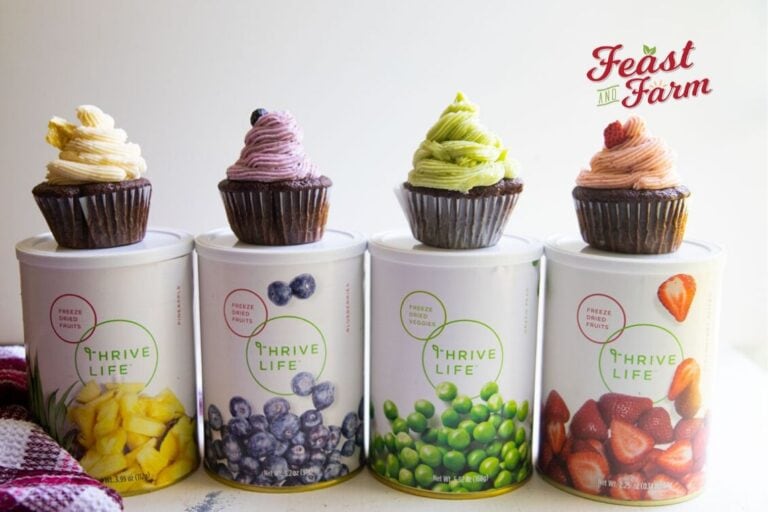
Convenience and long shelf life
The joy of this method is that freeze drying makes the fruit ready to crush and use right out of the can. You can crush what you need for one project or make a lot and save it in an airtight container in your pantry.
They will last at least a year and the main can can sit that long on your shelf as well–but you’ll likely eat it all up as snacks long before that happens.
Dry texture means less risk to your recipe
Using freeze dried fruits for color means that their dryness doesn’t effect the fats in your frostings or baked goods. It can be added with the butter at the beginning or anywhere during the creaming process without splitting or curdling.
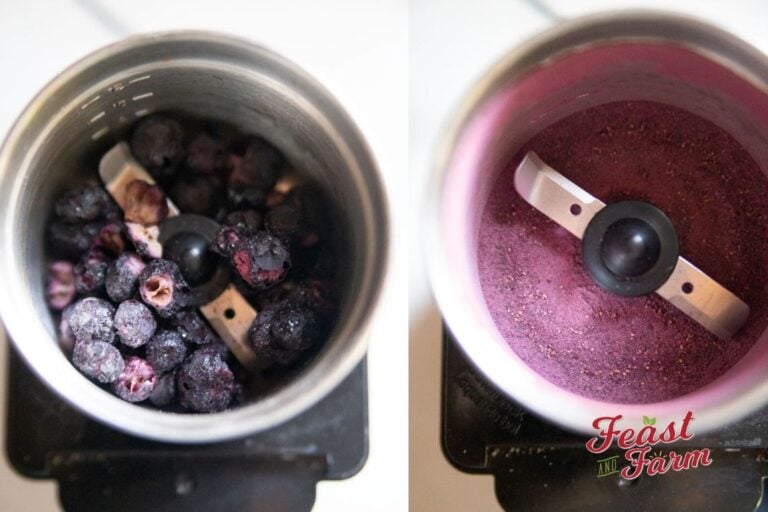
Steps for making natural food colors
To make your food colors, start my measuring out about a cup of freeze dried fruits or vegetables. Here I’m using:
- Freeze dried strawberries = Red/pink
- Freeze dried blueberries = Blue/purple
- Freeze dried pineapple = Yellow
- Freeze dried peas (your food won’t taste like them) = Green
Measure out about a cup of your fruit or vegetable into a high powered blender or coffee grinder. Pulse until a fine powder forms–about 15 seconds or so. Transfer to an air tight container where your powders will store for at least a year without refrigeration.
Wash out or wipe out your blender and repeat with the other colors.
To use in a frosting: Add one tablespoon of powder at a time to the fat in a frosting (like butter) and blend until you get the desired color then add the sugar and proceed with the recipe.
To use in a cake: Add the powder to the wet ingredients until the desired color is achieved. This could be up to 1/4 cup or 4 tablespoons for cakes. Proceed with the recipe as instructed.
**Remember: No natural food color will ever be as vibrant as synthetic ones. There’s no way around that–so just celebrate the color you can get from them.
Recipes inspiration to try
- Buttercream frosting
- Fluffy buttercream frosting
- The best cream cheese frosting
- Easy rainbow cake
- Homemade strawberry cake
- Orange creamsicle cake
- Homemade orange sherbet
Other natural food coloring options to explore
I believe freeze dried fruits make the best color–but if you want those beets, turmeric and spinach recipes try:
- Liquid colors from Leite’s Culinaria
- Minimalist Baker’s Natural Food Dye
- This YouTube video for making concentrated colors
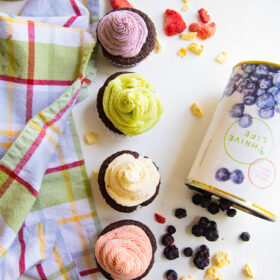
Natural Food Coloring
Instructions
- Add dry fruit into a coffee grinder or high powered blender. Blend until powdered and transfer to an air tight container to store. Powders will last one year on the shelf or longer.
- Wash blender or grinder between colors and repeat with each fruit and vegetable.
- To use: add one tablespoon at a time of powder to the fat (butter) of a frosting recipe. Blend to desired color before adding powdered sugar. For cakes, add powder to the wet ingredients and incorporate. If you don't want as much of the fruit flavor coming through, add a touch of extra vanilla or a dash of almond extract. Feel free to add a bit more for cakes to get a more intense color, but remember some flavor may translate into the final recipe.
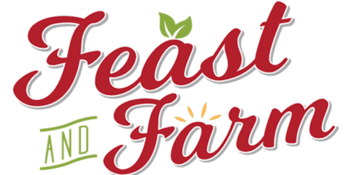
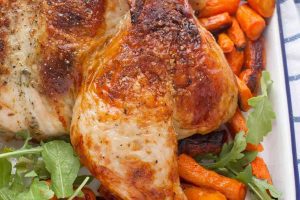

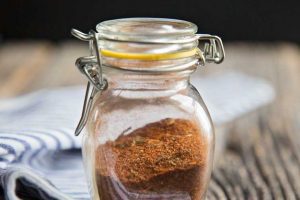
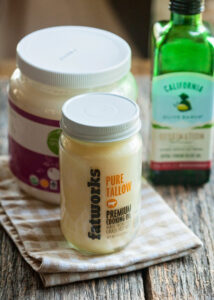
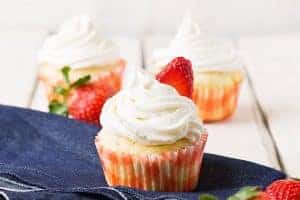
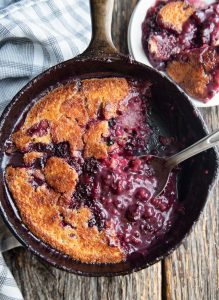
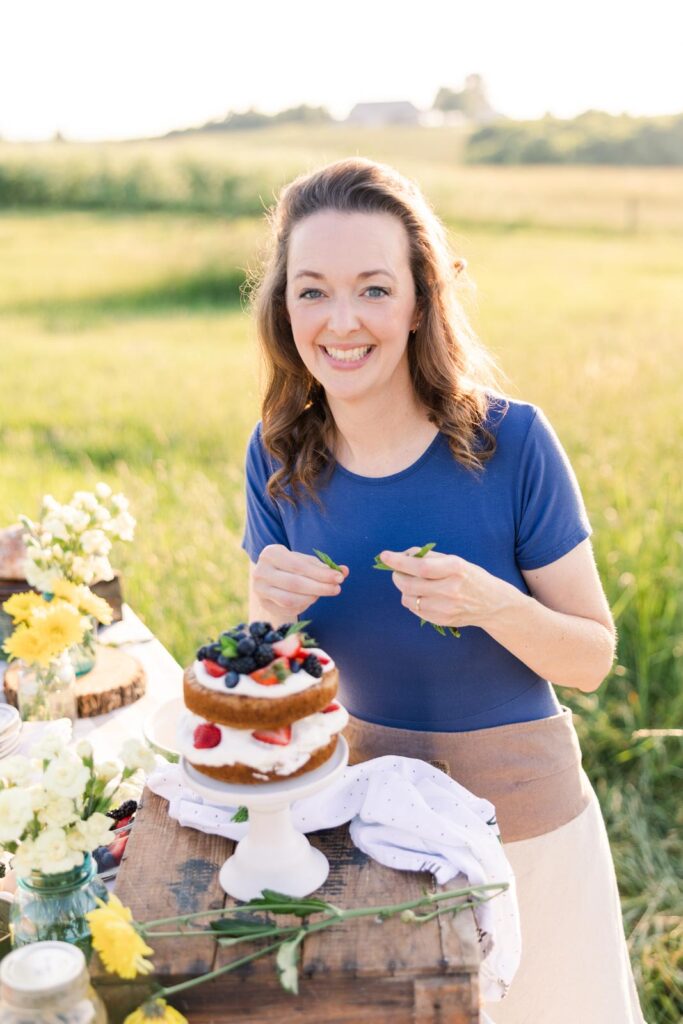
Finally!!!
I’m so happy to found this wed site!!
Now I have other questions for you that can I use fruit powder for candy melts too?
I think I should use white chocolate melts then use fruit powder I guess…
If there is recipe for candy melts with natural food color for decorations?
I’m very HAPPY to get it!!!
Thank you.
Hey Misako, With candy and chocolate the balance of liquids in those can make them seize when you add other things. You can certainly test it out and see what happens, but know that you may not be able to translate this idea across all candy making. If you need help shopping for your dried fruit just let me know–I’ll be happy to help! –Rachel
I agree, freeze dried is best! I have been using freeze dried strawberries and raspberries for years for the intense authentic flavor. Now I am looking to expand my use as we are avoiding dyes. Where do you buy your freeze dried foods from?
I use Thrive Life foods (not Thrive Market) and the products are linked in the post. Food dyes are a great additive to kick! –Rachel